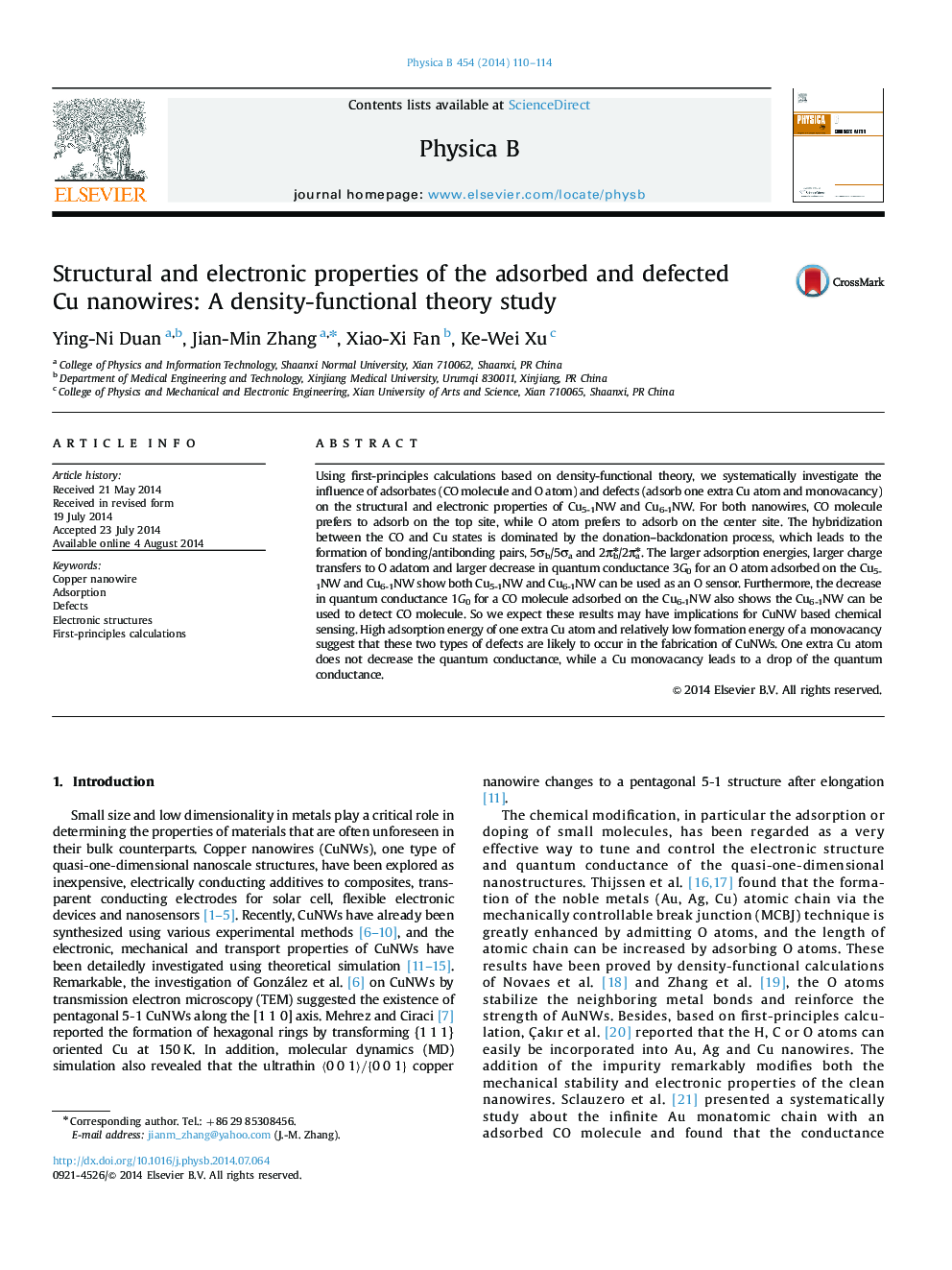| Article ID | Journal | Published Year | Pages | File Type |
|---|---|---|---|---|
| 8162257 | Physica B: Condensed Matter | 2014 | 5 Pages |
Abstract
Using first-principles calculations based on density-functional theory, we systematically investigate the influence of adsorbates (CO molecule and O atom) and defects (adsorb one extra Cu atom and monovacancy) on the structural and electronic properties of Cu5-1NW and Cu6-1NW. For both nanowires, CO molecule prefers to adsorb on the top site, while O atom prefers to adsorb on the center site. The hybridization between the CO and Cu states is dominated by the donation-backdonation process, which leads to the formation of bonding/antibonding pairs, 5Ïb/5Ïa and 2Ïbâ/2Ïaâ. The larger adsorption energies, larger charge transfers to O adatom and larger decrease in quantum conductance 3G0 for an O atom adsorbed on the Cu5-1NW and Cu6-1NW show both Cu5-1NW and Cu6-1NW can be used as an O sensor. Furthermore, the decrease in quantum conductance 1G0 for a CO molecule adsorbed on the Cu6-1NW also shows the Cu6-1NW can be used to detect CO molecule. So we expect these results may have implications for CuNW based chemical sensing. High adsorption energy of one extra Cu atom and relatively low formation energy of a monovacancy suggest that these two types of defects are likely to occur in the fabrication of CuNWs. One extra Cu atom does not decrease the quantum conductance, while a Cu monovacancy leads to a drop of the quantum conductance.
Related Topics
Physical Sciences and Engineering
Physics and Astronomy
Condensed Matter Physics
Authors
Ying-Ni Duan, Jian-Min Zhang, Xiao-Xi Fan, Ke-Wei Xu,
